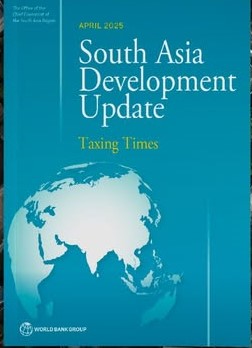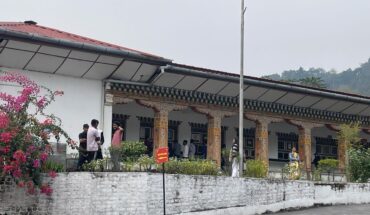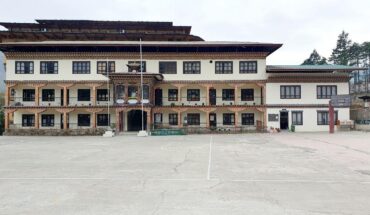
Bhutan’s employment support programs face gaps in addressing some of the challenges related to the activation of women
RENUKA RAI
Thimphu
Bhutan’s labor remains predominantly employed in the low productivity agriculture sector and the public sector. Opportunities for women in meaningful employment remain constrained as outlined in the Bhutan Development Outlook of the World Bank.
The report highlights that the employment quality outside of the public sector remains weak, leading to public sector queuing, rising unemployment among urban workers, and a record number of Bhutanese emigrating.
It states the private sector struggles to create jobs that can absorb the increasingly educated workforce and fill existing vacancies in low and semi-skilled positions.
“The more productive sectors have experienced higher job creation rates, but these sectors are relatively small and have limited capacity to absorb the rising number of high skilled workers,” the report states.
Further, WB states that hiring difficulties for low and semi-skilled positions are negatively affecting firm performance.
The report argues that existing employment support programs and delivery systems can be enhanced to better support women in becoming more active participants in the workforce, equipping them with relevant job-related skills, and assisting firms in recruiting trained labor.
“Addressing Bhutan’s labor market challenges requires pursuing vertical growth policies that are sector-specific to support private sector development and job creation, as well as horizontal reforms that improve the business environment, strengthen human capital accumulation, and increase the effectiveness of employment support programs are needed,” it states.
The report argues that there is a strong case for targeted employment support programs that improve the skills of vulnerable groups and support both workers and firms in Bhutan.
It says employment support programs are needed to help reduce the extensive skill mismatches in the labor market discussed earlier.
As of 2019, 0.1 percent of the country’s gross domestic product (GDP) was spent on skills development and training, with only Singapore spending more, 0.3 percent.
“Although Bhutan has improved its employment programs and policies over the last few years, significant gaps remain. Bhutan’s employment support programs and delivery system consist mainly of Active Labor Market Programs (ALMPs), technical and vocational education and training (TVET) courses, Employment Services Centers (ESCs), and a Labor Market Information system (LMIS).”
WB further states that ALMPs in Bhutan are small, fragmented, and not specifically focused on the activation of women. ALMPs primarily serve vulnerable youth, offering labor market training to enhance skills, but lack comprehensive coverage and gender sensitivity.
Programs like Youth Employment Livelihood Program (YELP), Skills Development Flagship Program, and others focus on employability, with YELP being the largest and only one offering wage subsidies.
However, according to WB report, these programs have limited regional reach, small participant numbers, and no clear plans for scaling up.
They also fail to establish strong links with employers, lack demand-driven training, and do not provide soft skills training, which diminishes their effectiveness in the labor market.
“Additionally, there is a lack of rigorous evaluation, data transparency, and systematic tracking of graduates’ outcomes, which hinders the assessment of their impact and relevance,” it states.
Efforts to improve data collection are underway, but the fragmentation and lack of coordination across different ministries’ ALMPs further limit their overall impact.
Further, the report states that the public TVET system is well established, but it remains too small to meet labor demand and is not sufficiently linked to employers.
WB states: “Bhutan’s TVET system supports ALMPs by offering vocational training to young job-seekers, with improved quality and student satisfaction in recent years. The system has enabled occupational mobility, particularly for those from agricultural and uneducated family backgrounds.”
However, despite these improvements, the number of TVET graduates remains low and does not meet private sector demands, with a decline in graduates and a gender imbalance emerging.
The TVET system lacks demand-driven programs and strong employer links, resulting in high unemployment rates among graduates and a mismatch between the skills provided and future job market needs.
Geographical distance from employment opportunities and a concentration of private training providers in Thimphu also limit the system’s inclusiveness and its ability to address rural unemployment.
Further, ESCs are not empowered enough to play a pivotal role in job placement and matching.
WB notes that there has been an 18 percent increase in job-seeker visits year over year. Despite this, ESCs face challenges due to a lack of trained, dedicated staff, with only Thimphu’s ESC having permanent staff and others relying on interns, leading to limited-service provision.
“Data on ESC operations and effectiveness is insufficient, as there is no systematic collection or monitoring and evaluation system in place,” the report states.
Furthermore, most ESCs are situated in government buildings with inadequate resources and are subject to formal dress codes and restricted hours, which hampers their ability to provide comprehensive services such as counseling.
The report further states that while Bhutan has a new LMIS, it is still in its early stages and needs further development. An LMIS aims to provide stakeholders with updated and easily accessible labor market information to make informed career and training decisions.
“Current gaps include the absence of earnings data and unclear data sources and methodologies, which may confuse the general audience.
“Future integration with the Bhutan Labor Market Information System (BLMIS) job matching and training portal could enhance the system’s utility for students, employers, and job-seekers.”
WB opines that addressing Bhutan’s labor market challenges requires pursuing vertical growth policies that are sector-specific to support private sector development and job creation.
“In parallel, horizontal reforms that improve the business environment, strengthen human capital accumulation, and increase the effectiveness of employment support programs are needed.
“Although worker shortages in the domestic labor market could lead firms to hire low-skilled foreign workers from neighboring countries, only a few firms in Bhutan hire foreign workers, and the percentage of firms doing so has declined substantially over time.”




